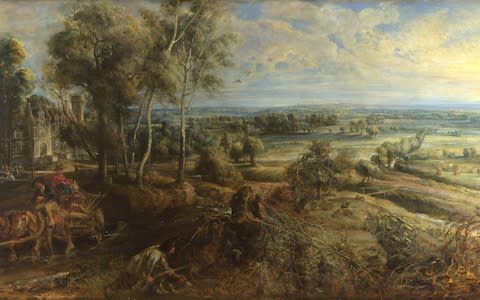Wallace Collection to loan Titian masterpiece as it ends 119-year lending ban

When the owner of the Wallace Collection bequeathed it to the nation in 1897, she specified in her will that it be “kept together unmixed with other objects of art”.
In the words of the museum’s current director, that left the collection “frozen in time” for more than a century with no works loaned out and no loans allowed in.
However, that is to change. Titian’s Perseus and Andromeda, perhaps the greatest painting in the collection, is to be sent across town to the National Gallery after the Wallace trustees reinterpreted Lady Wallace’s will.
Titian: Love, Desire, Death at the National Gallery will reunite the artist’s six great mythological paintings, known as the Poesie, for the first time since the late 16th century when they were painted for Philip II of Spain.
Two were already in the gallery’s collection, one is being loaned from Boston, one from Madrid and one from the Duke of Wellington. The gallery had written off the prospect of borrowing the Wallace’s work, given the seemingly strict terms of the will.
“The one picture missing from the display was the Wallace Collection picture. It was a fact of life, that was how it was going to be and there was very little one could do about it.
“But timing is sometimes miraculous. Sure enough, things have happened and we are delighted that it will be possible to have the ‘poesie’ gathered together,” said Gabriele Finaldi, director of the National Gallery.
The Wallace Collection’s director, Dr Xavier Bray, said the decision to begin lending - and receiving loans - is a “landmark” in the institution’s history.

“Things change,” he said, explaining the museum’s new direction.
“It became quite obvious that the Wallace Collection had to adapt to the present and be fit for the 21st century, and that is what we are doing.”
Sir Richard Wallace inherited the collection from his father, the 4th Marquess of Hertford, and it was his widow who bequeathed it to the nation.
According to Dr Bray, “for some reason people have twisted the wording” of Lady Wallace’s will to interpret it as a ban on lending.
“What you have to understand when you read the will is that ‘they should be kept together and not mixed with other objects’ - that [means] permanently, that the collection shouldn’t be broken up.”
The new interpretation was based on legal advice, and approved by both the Government and the Charities Commission.
There is a financial aspect to lifting the ban - the museum can now loan works for exhibitions, which it hopes will lead to an increase in visitor numbers and revenue.
In return for the loan of Perseus and Andromeda, the Wallace Collection is to show a Rubens from the National Gallery. A View of Het Steen in the Early Morning is a companion piece to the Wallace’s Rainbow Landscape, and the two will be displayed together from May-September next year for the first time in 200 years.
“We are free and we want to remain free. But, like every other museum, we now charge for exhibitions and that allows us to have a business plan which the Wallace Collection simply did not have before,” Dr Bray said.
“It has been said that my predecessors enjoyed the fact that they didn’t need to do that much fundraising and became scholars. It was more of an academic university, really.
“The beauty of this collection is that many of these great works have yet to be properly studied, x-rayed, looked at. It is a virgin collection as a result. As a national institution our responsibility is to make that collection better known and better understood.”

 Yahoo News
Yahoo News 